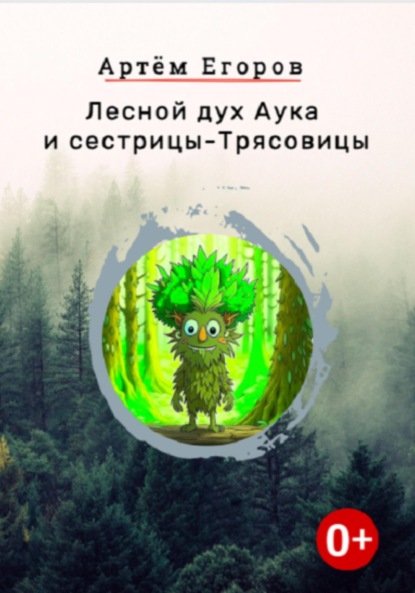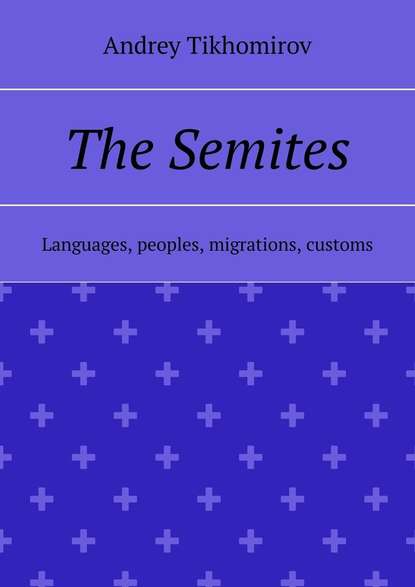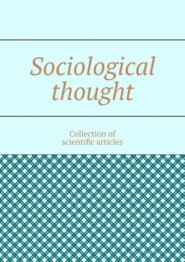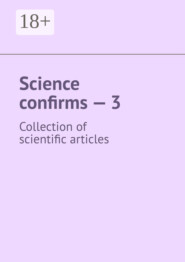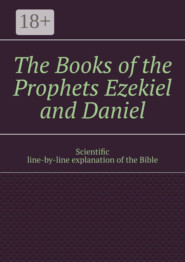По всем вопросам обращайтесь на: info@litportal.ru
(©) 2003-2024.
✖
The Semites. Languages, peoples, migrations, customs
Настройки чтения
Размер шрифта
Высота строк
Поля
Andrey Tikhomirov
The book tells about languages, peoples, migration movements of Semitic peoples. About how a Semitic community arises, the emergence of beliefs, customs, rites, rituals. Various historical and ethnographic sources of different times are involved. Short data in Amharic, Arabic, Hebrew and Maltese.
The Semites
Languages, peoples, migrations, customs
Andrey Tikhomirov
© Andrey Tikhomirov, 2020
ISBN 978-5-4498-2315-1
Created with Ridero smart publishing system
Semitic languages and peoples
Semitic languages – one of the branches of the Semitic-Hamitic family of languages, which is also called the Afro-Asian or Afro-Asian macro-family of languages common in North Africa, Southwest Asia and the island of Malta. They are divided into 5 (or 6) main branches: Semitic, Egyptian, Berber-Libyan, Chadian, Cushite and Omot (sometimes considered as a Cushite branch). The Afrasian family, in turn, is part of an even larger language family – the Nostratic. Nostratic languages (from Lat. Noster – ours), a macro-family of languages, including a number of language families and languages of Eurasia and Africa (Indo-European, Kartvelian, Afrasian, Uralic, Altai, Dravidian languages, etc.).
Semitic languages consist of groups: 1) north-peripheral, or eastern (extinct Akkadian with dialects of Assyrian and Babylonian); 2) north-central, or north-western [living – Hebrew and New Aramaic dialects, united under the name of the Assyrian (New Syriac) language; the dead – Eblaite, Amorite, Canaanite, Ugaritic, Phoenician-Punic, Aramaic dialects; Ancient Aramaic, Imperial Aramaic, Western Aramaic – Palmyra, Nabatean, Palestinian; East Aramaic – Syriac, or Syriac, Babylonian-Talmudic, Mandean]; 3) south-central [Arabic (with dialects) and Maltese]; 4) south-peripheral (living – Mehri, Shkhauri, Socotri, etc.; dead – Minean, Sabei, Kataban); 5) Ethiosemitic (living – tiger, tigray, or tigrinya, Amharic, argobba, etc.; dead – geez (ge’ez), or Ethiopian, hafat). Modern Semitic languages are divided into: South Semitic, including Arabic (literary, colloquial, disintegrating into a number of dialects, and Maltese), Amharic, gurage, Harar, tiger, tigrinya (the last five are in Ethiopia and Eritrea), Ehkili and Mehri in South Arabia and Socotri on the island of Socotra; North-Western languages, including the New Syriac and other living dialects of the Aramaic language, Moabite and Hebrew, or Hebrew, now the official language in Israel (Canaanite group), as well as languages and dialects of the Aramaic group.
Hamitic languages – a name proposed by the German Egyptologist and linguist R. Lepsius to denote some African languages based on the presence of a grammatical gender of nouns. This group unites: Berber, Cushite, Ancient Egyptian and Coptic languages. At the beginning of the XX century. The German linguist K. Meinhof, developing the provisions of Lepsius, also argued that all African languages with a genus constitute a single hamitic family of languages. In his opinion, light-skinned peoples spoke these languages, who came to Africa from the north and brought the beginnings of a higher culture. From the mixing of Hamitic languages with the languages of the indigenous population of Africa – Negroids, Bantu languages have evolved. Among the Hamitic languages, Meinhof included, in addition to the Berber and Cushite languages, also the languages of Hausa, Masai, Ful and Hottentot languages. However, further studies have shown that the Ful language is among the Sudanese languages of the Atlantic group. The Hottentot languages together with the Bushman languages make up a special family of languages. The Masai language belongs to the Nilotic language family. The Berber and Cushite languages are part of the Semitic-Hamitic languages, this family is not a combination of two groups – Semitic and Hamitic, because, as the French linguist M. Cohen pointed out, there is not a single feature common to all Hamitic languages that would contrast them with Semitic. All the languages of North Africa (Berber and Cushite) constitute separate groups within the Semitic-Hamitic family of languages, which also includes Ancient Egyptian and Coptic, as well as the Hausa language with its related languages. The name “Hamitic languages” is now supplanted by the term “Semitic-Hamitic.”
Kushite languages, a branch of the Afrasian languages. It consists of 5 groups: 1) northern – Bedauie; 2) central – agave languages; 3) Oriental – Afarsaho languages, Somali (Somali, Boni, Bayso, Randille), Oromo, Burji-Sidamo, Conso, Gidole, Arbore, Geleb, Mogodogo, etc.; 4) Western – Ometo, Kaffa languages, etc.; 5) southern – Iraqi, Aramanic languages. Kushite languages are groups of languages that make up the Semitic-Hamitic family of languages. The tribes who speak the languages of the southern group are surrounded on all sides by a Bantu-speaking population. The comparative grammar of the Cushite languages proves their closeness to each other and their undoubted kinship is not in doubt. The grammatical system and the main vocabulary of the Cushite languages have much in common. All nominal verb stems in them for the most part consist of three consonants. Various forms of the verb are formed by changing vowels. Personal pronouns are similar in all Cushite languages. There are two types of conjugation in Cushitic languages: mutable verbs are conjugated using prefixes, immutable verbs are conjugated using suffixes. Each of them with the help of inflection can form different times.
The extinct Ethiopian language (or ge’ez, geez) was close to the ancient South Arab and modern Arabic languages, in some morphological and lexical features it was close to Akkadian. The Ethiopian language arose at the beginning of our era on the territory of Ethiopia among immigrants from South Arabia and became the state language of the state of Axum. Starting from the 9th century the Ethiopian language was supplanted by its related Amharic language. From the 13th century Ethiopian language ceased to be the official language, but as a literary language continued to exist until the end of the XIX – beginning of XX centuries. Now it is the cult language of the Christian population of Ethiopia. Being in interaction with the Amharic language, the Ethiopian language enriched the latter lexically and lost some features of its original phonetic system. Ethiopian writing is the syllabic alphabet of the Ethiopian language. It consists of 26 main characters, each of which has seven options, or the so-called “orders”. Letters are written from left to right. The pronunciation of Ethiopian letters is known from the Amharic tradition. With the additional letters of this letter, it is used for Amharic, Tiger, Tigrinya and other languages of Ethiopia and neighboring countries. Ethiopian writing comes from South Arabic writing.
The oldest monuments of Semitic languages include the Akkadian cuneiform inscriptions of the Mesopotamia of the Tigris and Euphrates, the proper names and localities of Palestine in Egyptian inscriptions (3—2 thousand BC). There are written records in Akkadian, Hebrew, Syriac, Ethiopian, Arabic. The inscriptions in Ugaritic, Phoenician-Punic, Minean, Sabaean, etc. are preserved.
Extensive writing is available in Akkadian, Hebrew, Syriac and other Aramaic dialects, Ethiopian and especially Arabic, which was a long time literary language also in Iran, Central Asia, Spain and other countries.
Characteristic features of Semitic languages are: a limited number of vowels (originally a, u, u in the long and short versions), the presence of three rows of consonants (voiced, deaf and consonants of intense articulation – velarized, or accompanied by a laryngeal explosion), the presence of pharyngeal consonants (x and”, the so-called’ Ain), reed consonants (x, d) and the laryngeal explosion (”, the so-called Hamza, or Aleph). The primary phonetic system, invisible, is best preserved in Arabic. The root consists in the vast majority of cases of three consonants that bear the main vocabulary meaning, while vowels, as well as prefixes, suffixes and infixes clarify the meaning or convey a grammatical category. There are traces of the primary biconsistency of the root. In word formation, word composition does not play a role, but there is a complex system of word formation by changing the vowel and affixes. An important role is played by the nominal definition in the genitive case, and the definite gets a special form of “conjugate state”. The number of cases of the name at first usually came down to three (nominative, genitive, accusative), in the Old Akkadian – to five; later in all Semitic languages the case system dies. There is a dual number along with the plural; the latter in southern Semitic languages is largely supplanted by various collective, formed by re-negotiating the basis (“broken plural”). The verb system is characterized by the presence of the so-called. “breeds” – foundations with specific vocalization and special features in the form of prefixes, infixes, doubling of consonants, etc. Species in a special way modify the basic verb meaning (reinforcing, stimulating, returning form, etc.). The breed usually has a complete system of conjugations, changes in species, verbal names, etc. In the verb, the category of time is poorly developed (except for the latest Semitic languages, where there are secondary formations); usually there are two kinds – perfect with suffixal and imperfect with prefixal conjugation; in Akkadian, the species system is more complex.
Arabs – the name of the peoples of the Semitic language group inhabiting the Near East and North Africa. The oldest settlement area of Arab tribes is the northeastern part of the Arabian Peninsula. In the 2nd millennium BC. Arabs spread throughout the peninsula, assimilating the more ancient population of its southern part. Already from the middle of the 1st millennium BC. Arabs penetrated beyond Arabia, and, starting from the 7th century. n e., a significant part of them moved to some conquered countries – Syria, Mesopotamia, Southern Iran, Egypt and North Africa, spreading the Arabic language there and borrowing, in turn, the high culture of the conquered peoples, and subsequently developed an independent Arab culture on this basis. As a result of the merger of the Arabs with the local population, a number of Arab nationalities formed; after the formation of national Arab states, the process of formation of individual Arab nations began to take shape. Arabs of certain countries speak different dialects of the Arabic language: Arabian, Moroccan, Lebanese, Egyptian, etc. The main anthropological type of Arabs is Mediterranean, but in Iraq and eastern Arabia, the Armenoid is predominant, and Ethiopian is prevalent in southern Arabia.
Arabic is the most widely spoken of the Semitic languages at present, and belongs to the southern branch of this language group. Arabic literary language (as opposed to dialects), formed on the basis of the North Arabic language, is spoken in Western Asia (Iraq, Syria, Lebanon, Palestine, the Arabian Peninsula) and North Africa (Egypt, Libya, Tunisia, Algeria, Morocco, part of Sudan and a number of localities along the east coast to Zanzibar). The oldest monuments of the Arabic language are the inscriptions Namar (328 A.D.), Zabad (512 A.D.) – in the ruins of Ouabad south of Aleppo – and Harran (568 A.D.) and the area of Harran south of Damascus However, the abundant number of literary monuments in Arabic has survived only from a later time, namely, from the VI – VII centuries. These were, first of all, numerous works of poetry, which were preserved for a long time in a stable way and were subsequently recorded by Arab philologists in the 8th – 9th centuries, then the Koran (1st half of the 7th century). In these literary monuments, the Arabic language already appears as fully developed, with a well-established grammatical system and lexical composition of the tribal literary language, developed on the basis of tribal dialects and dialects and reflecting the diversity of their vocabulary. The grammatical facts and vocabulary richness of these works were carefully recorded by the first grammars and lexicographers and accepted as if as a “canon”, which was the basis for the further development of the literary language. Although subsequently many of these words or part of the meanings of these words became obsolete, especially those words and meanings that are associated with nomadic cattle breeding and tribal relations, however, they still play the role of a potential reserve, which quite often is reflected in one or the other modern writer. In its further development, the literary Arabic language, in which over the course of centuries a huge literature has been written, to a large extent created not by the Arabs, but by the peoples of Central Asia, the Caucasus, etc., has become very rich in the field of vocabulary. On the other hand, the Arabic language has had a significant impact on other languages, especially in the field of terminology of mathematics, astronomy, chemistry, trade, such as, for example, “digit”, “algebra”, “azimuth”, “alcohol”, “potassium”, “bismuth”, “coffee”, “camphor”, “shop”, “treasury”, “tariff”, “carat”, etc. In Arabic they write from right to left. Moreover, in Arabic, unlike languages with Latin or Cyrillic graphics, there are no capital letters, so proper names are spelled like any other word, as well as the first word in a sentence.
Punctuation marks are written upside down, that is, from left to right. In phonetic terms, the slave language is distinguished by an abundance of consonant phonemes, especially laryngeal, emphatic, and also interdental. There are only three vowel phonemes; they can be short or long. Grammatically, the Arabic language, like other Semitic languages, is characterized by a significant development of inflection. The root of the word consists of one consonant, usually three, less often four or five. Verb forms are highly developed. The Arabic language has a ramified verb system, the basis of which are two forms that go back to the Semitic perfect and imperfect. Derivative fundamentals are expressed: the intensity of the action, orientation and aspiration, causation, return, competition, reciprocity, etc. The number of these fundamentals reaches 15; in this regard, the Arabic language is richer than other Semitic languages, morphologically formed times – two; there are two pledges – real and passive; moods: indicative, subjunctive, conditional, amplifying and imperative; instead of the indefinite form, the system of verb names is very developed. Numbers – three both in the verb and in the names: singular, dual and plural; There are two genera – male and female. In the field of names: three hopes, which, however, have disappeared in modern dialects; plural forms (for example, collective names) have developed significantly; a combination of two names (one in the so-called conjugated form and the second in the genitive case) expresses not only belonging and close connection of concepts, but also various relations of attribution. In the role of service words are usually used nouns and adjectives in the accusative case. The syntax of the Arabic language is poorly developed subordination of sentences; subordinate clauses are replaced by a simple combination of independent clauses or special verb forms. Spoken folk language in the Arab countries breaks up into a number of dialects, significantly different from the generally accepted literary language. Currently, these dialects are as follows: Arabian, Syrian, Iraqi, Egyptian and Maghrib (in North Africa). Dialects gradually developed on the basis of the interaction of the Arabic language and the old languages of the respective countries; for example, in the Arabic dialects of Syria and Iraq the elements of the Aramaic language are very strong, in the Egyptian dialect there are quite a lot of Coptic words. However, literary Arabic is generally understood in all of these countries. Of almost all names and verbs in the Arabic language, a root consisting of consonants alone can be distinguished. Formation of words occurs mainly due to the internal structural change of the word – internal inflection. In the Arabic language there are three numbers of names: singular, dual and plural. Definitions and verbs are consistent with nouns in number. In the Arabic language, there are three so-called state names: raf”, hafd (or jarr), nasb. Often they are translated as nominative, genitive and accusative cases, respectively. In Arabic, the definition is consistent with that defined in certainty, gender, number, case. At the same time, for “rational” names (calling people) in the plural, the definitions are in the form of the plural of the necessary genus, and for “unreasonable” (calling animals, inanimate objects) in the singular form of the female gender.
Amhara is the main population of Ethiopia. Belongs to the Ethiopian anthropological type of Negroid race. Amharic (Amarinya) – a Semitic group, is the official language of Ethiopia; the common religion is monophysite-style Christianity. Most of the modern population of Ethiopia speaks Semitic languages, in addition to Amhara, these are tigers, gurages, argobba and harari. Amharic is a living semitic language of a significant part of the Ethiopian population, belonging to the languages of the southern group. In the Amharic language, only three parts of speech are clearly distinguished: name, verb, particle; there is no clear difference between the noun and the adjective, there is no line between the preposition and the union. The stress in the Amharic language is weak. The written Amharic language is Ethiopian with additional characters; Amharic writing and printing require 296 characters. The oldest literary monuments date back to the XIV – XV centuries. The heyday of literature dates back to the 17th century. The southern and eastern peoples of Ethiopia are Cushitic languages: galla (self-name of Oromo), which fall into two groups: Tulam and sword, or lyek; Somalia; Danakil speaking Afar; yeah; nationalities known under the general name “sidamo” (“aliens” in the Gallic language). Ethiopia is the birthplace of humanity, here, as well as throughout eastern and southern Africa, the formation of representatives of ancient humanity took place. In the valley of the lower reaches of the Avash River, many paleontological objects were found, the oldest 4 million years. The region of Tiyi was found more than 30 archaeological sites of ancient culture, whose age also reads millions of years, the valley of the lower reaches of the Omo River, where the oldest petrified remains of paleoanthropes were found. In the 1st millennium BC. the peoples of South Arabian civilization migrated to the north of Ethiopia. And from the middle of the 1st millennium BC. Until the VI century, the territory of northern Ethiopia and Eritrea was the slave state of Axum. The penetration of Christianity into Axum dates back to the 4th century. XIII century sources first mention the Ethiopian state. It comes from the ancient Greek name of the countries south of Egypt. Another name of the country and inhabitants – Abyssinia, Abyssinians, apparently, comes from the name of one of the tribes of ancient Axum – habashat. But since the inhabitants of Ethiopia (Abyssinia) see in the words “Abyssinia”, “Abyssinians” a contemptuous connotation (the Arabic word “habash” means “confusion”, “mixed people”, “mestizos”), the name of the Greek has long been accepted as the official name of the country origin – Aytyopia (Ethiopia). Despite the fact that the inhabitants of the Abyssinian Highlands speak several languages and belong to different ethnic groups, they all call themselves, first of all, Ethiopians. Ethiopians have created a rich culture that has centuries ago. They are famous for their delicate jewelry, colorful embroideries, decorating clothes, skillful weaving. From the Neolithic era in Ethiopia, dolmens, stone monoliths and tombstones with primitive images of human figures have survived. Monuments of developed art (a statue of the king and others) date back to the 9th – 7th centuries BC. The architecture of the Aksumite state, where dams, residential buildings were built, round and square in plan, reached a significant rise. Palaces (the largest of them – Takha Mariam – was divided into three courtyards, had external staircases and halls with a cruciform plan). Tombstones-stela in the form of multi-storey towers (up to 33 m high) have been preserved. With the penetration of Christianity into Ethiopia, churches and monasteries began to be built: rock churches (in Lalibela), basilicas, and small round churches.
The statue of the king. 9th – 7th centuries BC. North Ethiopia
Reconstruction of the palace of Taha-Mariam. Axum
Ruins of an ancient Greek church at Agoola. (The Illustrated London News, April 11, 1868)
Facsimile of two pages of an Abyssinian Bible. (The Illustrated London News, March 28, 1868)
Cross used in processions. (The Illustrated London News, March 7, 1868)
Tigrai is a nation that inhabits the northern regions of Ethiopia, as well as the southern and central regions of Eritrea (northeast Africa). The language of tigrai – tigrinya, belongs to the Semitic group of Semitic-Hamitic languages. According to anthropological characteristics, tigers belong to the Ethiopian anthropological type. Religion is a monophysite Christianity. Tigre is the main ethnic group of Eritrea (northeast Africa). Inhabit the Eritrean Highlands, the surroundings of Massaua and the islands of Dahlak. According to anthropological characteristics belong to the Ethiopian anthropological type. Tigers speak the language of the tiger, which belongs to the Semitic group of Semitic-Hamitic languages. By religion, Christians. Tigers are the descendants of the population of Axum, one of the ancient slave states of northeast Africa. By language, material and spiritual culture are close to tigers. Tigre is the language of the tigers living in Eritrea (Northeast Africa), in the Eritrean Highlands, in the vicinity of Massaua and on the islands of Dahlak. Refers to the southern Semitic branch of the Semitic group of the Semitic-Hamitic family of languages.
Tigrigna is the language of the Tigrai people who inhabit the northern region of Ethiopia, the southern and central regions of Eritrea (in East Africa). Refers to the southern Semitic branch of the Semitic group of the Semitic-Hamitic family of languages.
The biblical “explanation” of the origin of mankind is explained as follows (Genesis): the sons of Noah Shem, Ham, Japheth, after the end of the “global flood” populated the whole earth, however, science proves that the flood in the area of Mesopotamia was local in nature and the sons of Noah represented the peoples there. Ham was cursed by Noah for mocking the nudity of his intoxicated father and was doomed to slavery. Shem and Japheth, who showed filial piety and covered their father with clothes, were blessed by Noah. In the biblical genealogy of Shem, Ham and Japheth, their sons and grandchildren are represented by the ancestors of the eponyms of large groups of peoples: Semitic (from the eponym Sim, peoples of Elam, Mesopotamia, Syria, Jews, etc.), rude (from Ham, peoples Africa and others) and yaphetics (“yaphetids”, from “Japheth”), identified with the Indo-European peoples. Chapter 10: “1 This is the genealogy of the sons of Noah: Shem, Ham and Japheth. After the flood, their children were born. (Three main groups of peoples living in the Middle East found their expression here: Semitic languages – Jews, Assyrians, Aramaeans, Arabs; Hamitic languages “Copts, Berbers, Amharas; Yaphet (Caucasian) languages, some scholars associate with Indo-European peoples. Although the gradation is extremely arbitrary).” Isaac Asimov writes in the book “In the Beginning” (p. 321—322): “So, after the flood, God made the earth a second time. After describing this act, biblical authors quickly organize the peoples who inhabit the world (more precisely, that part of it that was them well known) in order to go directly to the history of the Israeli tribes – the central theme of world events.The three Noah’s sons embody the ideas of the three largest groups of peoples known to the ancient authors of the Bible. It is believed that the descendants of Shem inhabit the Arabian Peninsula and areas north ofincluding the valley of the Tigris and Euphrates. Since these descendants also include Israeli tribes, Shem was honored to be the eldest son of Noah. The languages spoken by the descendants of Shem are now called “Semitic” (“Sem” is the Greek-Latin form of the Hebrew named “Shem”; in Russian transcription – “Shem.”) They include Hebrew, Assyrian, Aramaic and Arabic. According to the Bible, the descendants of Ham live mainly in that part of Africa that is adjacent to Asia. The languages of the peoples who originally inhabited this territory were called “rude”.
Вы ознакомились с фрагментом книги.
Приобретайте полный текст книги у нашего партнера:
Приобретайте полный текст книги у нашего партнера:

